5 Best Hip Flexor Stretches to Counteract All That Sitting

(Photo: Andrew Clark)
You finally stand up after hours of sitting at your desk…and relief is the last thing you feel. Your low back aches and your hips are tight to the point that you struggle to fully straighten your legs. These sensations are often rooted in your hip flexors, muscles that are extremely important when it comes to ensuring your stability, balance, postural alignment, and full range of motion.
Prolonged sitting isn’t the only thing that causes tight hip flexors. Activities such as walking, running, and cycling also cause tightness in the hips—which means hip flexor stretches are a much-needed reprieve for all of us.
What Are Hip Flexors?
The primary hip flexor muscles are the psoas major, rectus femoris, iliacus, sartorius, and tensor fasciae latae. Several of these muscles cross the front of the hip and all of them create hip flexion when they contract by pulling the thighs and chest toward each other.
The psoas runs alongside the spine and attaches to the sides of the lumbar vertebrae. The iliacus originates on the inner bowl of the pelvis. Both muscles cross the floor of the pelvis and insert on the inner upper femur (thigh bone).
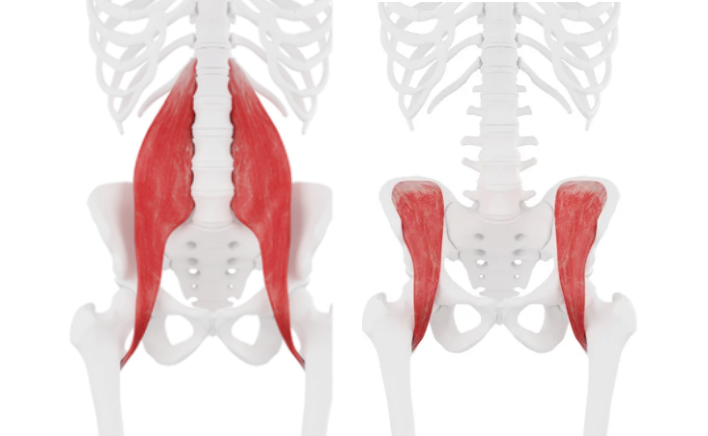
The hip flexors help lift your legs as you’re walking, running, coming into a lunge, and climbing stairs. When you sit for long periods or overwork these muscles, they remain in a contracted state. When the hip flexors are tight, they can pull on the pelvis, compress the lower back, and cause muscle pain and fatigue in the lower body. Practicing hip flexor stretches helps lengthen the contracted muscles and relieve pain.
Most yoga practitioners work long and hard to improve their hamstring flexibility but spend much less time stretching their hip flexors. The relatively tighter hip flexors create a muscle imbalance that tips the pelvis forward.
The resulting anterior pelvic tilt can cause problems in addition to back pain, including difficulty in standing yoga poses such as Warrior 2 (Virabhadrasana II) and Triangle Pose (Trikonasana). Tight hip flexors can also create challenges in poses requiring full extension (straightening) of the hip joint, including backbends such as Bridge Pose (Setu Bandha Sarvangasana) and Upward-Facing Bow Pose (Urdhva Dhanurasana) and standing poses such as Warrior 1 (Virabhadrasana I) and Warrior 3 (Virabhadrasana III). In each of these poses, tight hip flexors can cause painful compression in the lower back.
5 Best Hip Flexor Stretches to Relieve Pain
Prolonged sitting keeps the hip flexors in a tense, contracted state. Regular stretching counterbalances that.
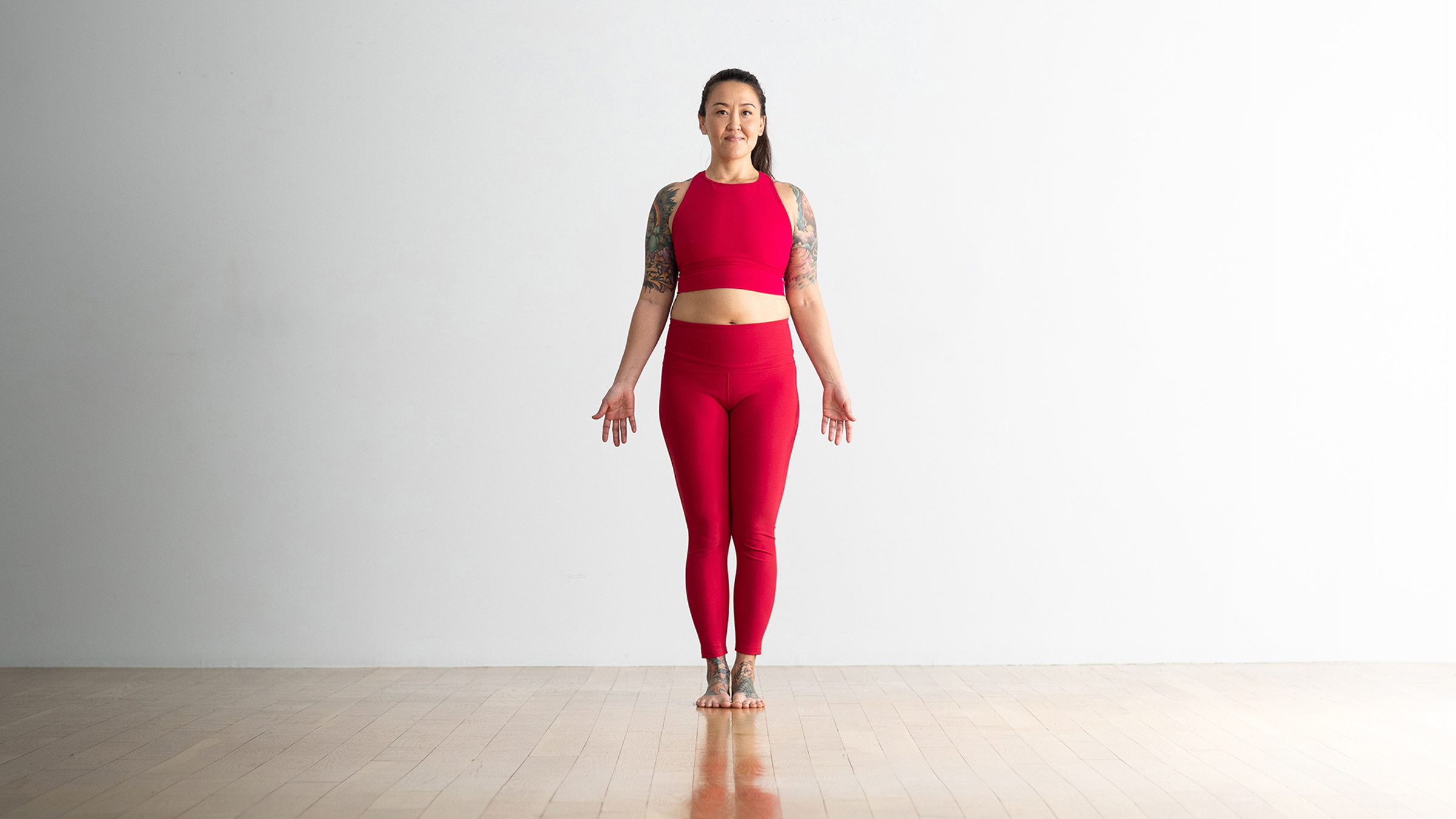
1. Mountain Pose (Tadasana)
If you tend to stand with an exaggerated curve in your lower back, developing awareness of your hip flexors is especially important. When they’re tight, they can cause a forward tilt of the pelvis and place strain on your lumbar region. You can practice that and lengthen your hip flexors at the same time in Mountain Pose.
How to:
- Stand with your feet together. Lift and spread your toes and lower them back to the floor. Draw your shoulders away from your ears. Reach the crown of your head toward the ceiling. Rest your arms by your sides with your palms facing forward. Teachers sometimes cue students to engage their abdominal muscles to correct a forward tilt of the pelvis in Mountain Pose. But gripping your abdominals won’t help if you have tight hip flexors. Gaze straight ahead. Stay here for 5-10 breaths.
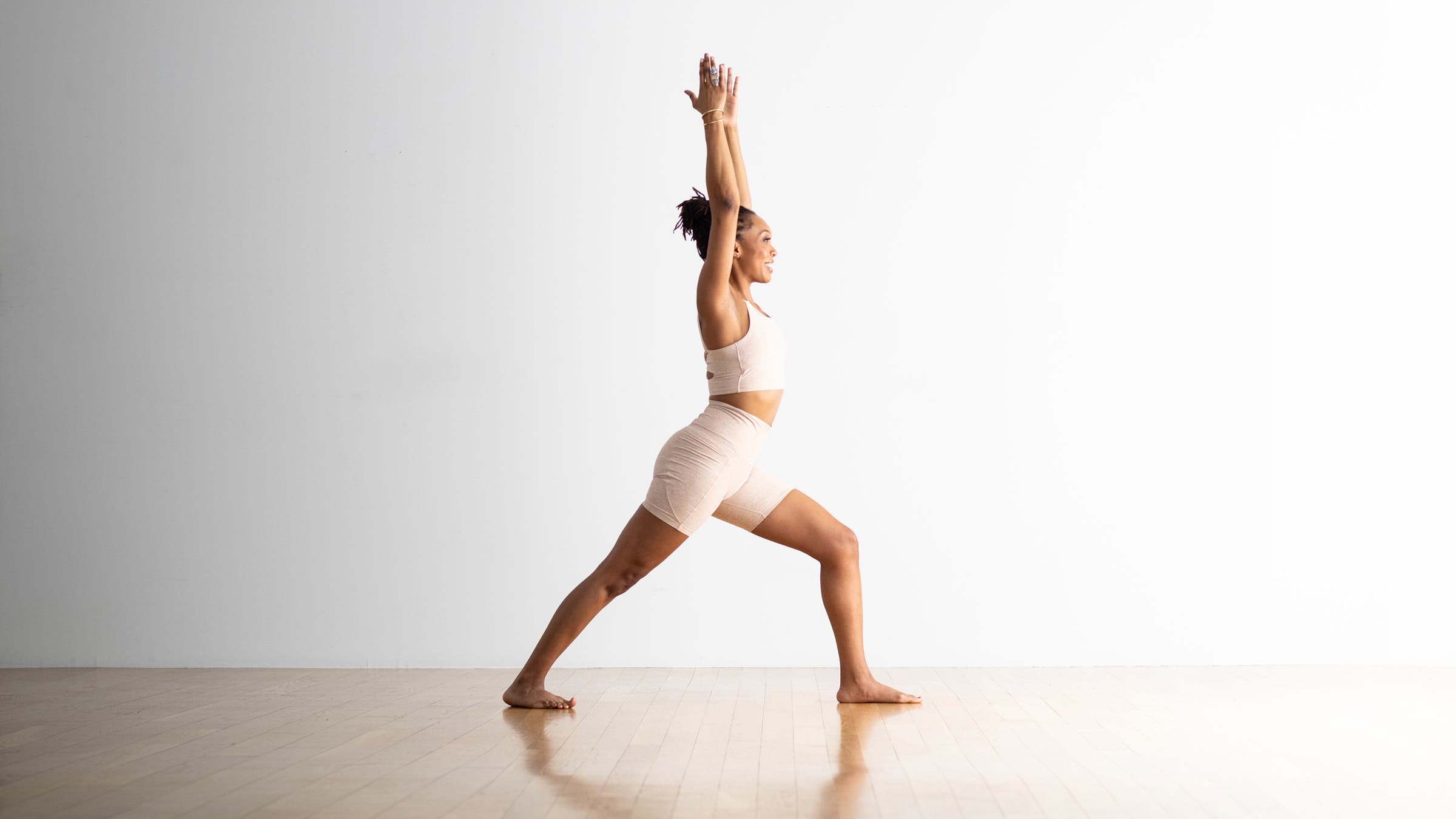
2. Warrior 1 (Virabhadrasana I)
As you’re standing with one leg forward and one leg back, place your fingers on the front pelvis bones. You should be able to feel a small, round protuberance on each side, called the anterior superior iliac spine, or ASIS.
The ASISes are good indicators of the tilt of the pelvis. On the back leg, the iliopsoas will pull the pelvis and lumbar spine down and forward into an anterior tilt. To counter this, use your fingers to lift the ASISes. Hold this as you bend your front knee, keeping your back knee straight and your back heel grounded. Feel the iliopsoas lengthen and visualize the spine lifting out of the pelvis.
How to:
- From Downward-Facing Dog, step your right foot forward and slightly to the right.
- Bend your front knee. Draw your right hip back and straighten your back leg. Turn your left foot slightly out. Inhale and reach your arms overhead with your palms facing in. Draw your shoulders away from your ears and your navel toward your spine in Warrior 1. Stay here for 5-10 breaths.
- To come out, lower your hands to the floor, step back to Downward-Facing Dog, and repeat on the other side.
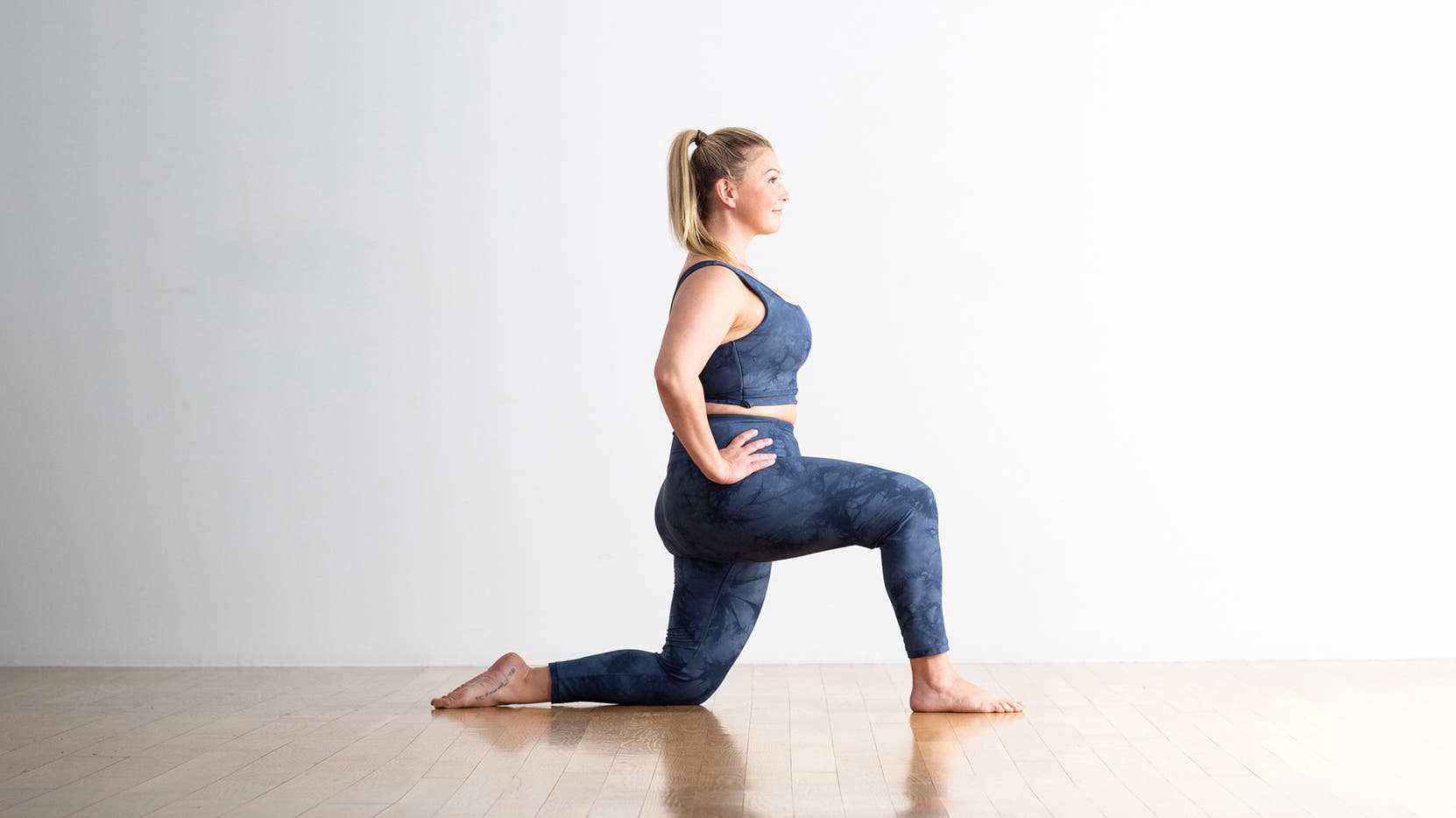
3. Low Lunge (Anjaneyasana)
Your front hip flexors work to stabilize your body while the back muscles get a deep stretch in Low Lunge.
How to:
- From Downward-Facing Dog, step your right foot forward and slightly to the right.
- Lower your left knee to the mat and slide it back until you feel a comfortable stretch along the front of your left thigh.
- Inhale and lift your chest as you reach your arms overhead, palms facing each other. Draw your tailbone toward the floor and your navel toward your spine in Low Lunge. Stay here for 5-10 breaths.
- Exhale as you lift your back knee and step back to Down Dog. Repeat on the other side.
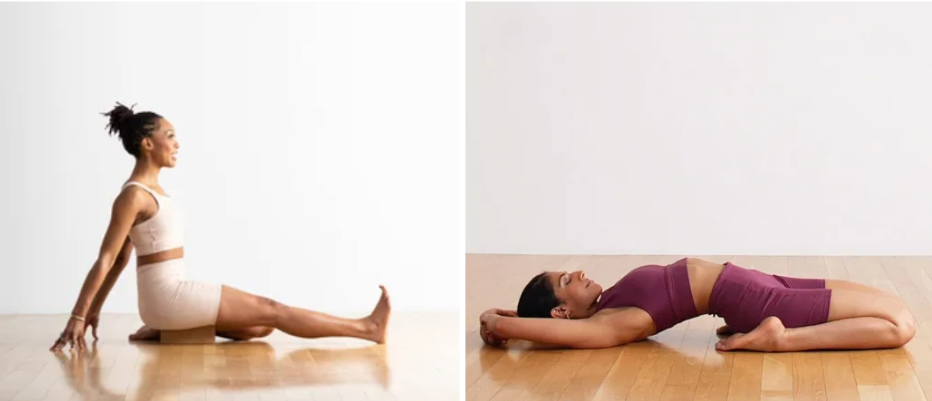
4. Half or Full Reclining Hero Pose (Supta Virasana)
To stretch the rectus femoris, you need a pose that flexes the knee and extends the hip—which happens in Reclining Hero Pose. This is essentially the quad stretch that is commonly practiced standing but in a seated or reclined version.
How to:
- Sit on the floor with both legs straight in front of you. Bend your left knee and rest the top of your left foot alongside your left hip in Half Hero Pose. Stay here or bend your right knee in the same fashion.
- Place your hands on the floor behind you with your fingertips facing the back wall. Flex your foot. Walk your fingertips back until you feel a comfortable stretch along your left thigh in Half Reclining Hero Pose.
- Stay here or, for a more intense stretch, lower to your elbows or recline all the way onto the mat in Full Reclining Hero Pose. You can place a bolster or folded blanket lengthwise underneath your back for more support. Draw your knees toward each other. Stay in your chosen variation for 5-10 breaths.
- To come out, rise to your forearms, then your elbows, then your hands if you were reclined. Walk your hands back toward your body, slowly lift yourself upright, and lean to one side as you straighten the opposite leg. If you kept one leg straight, switch sides.
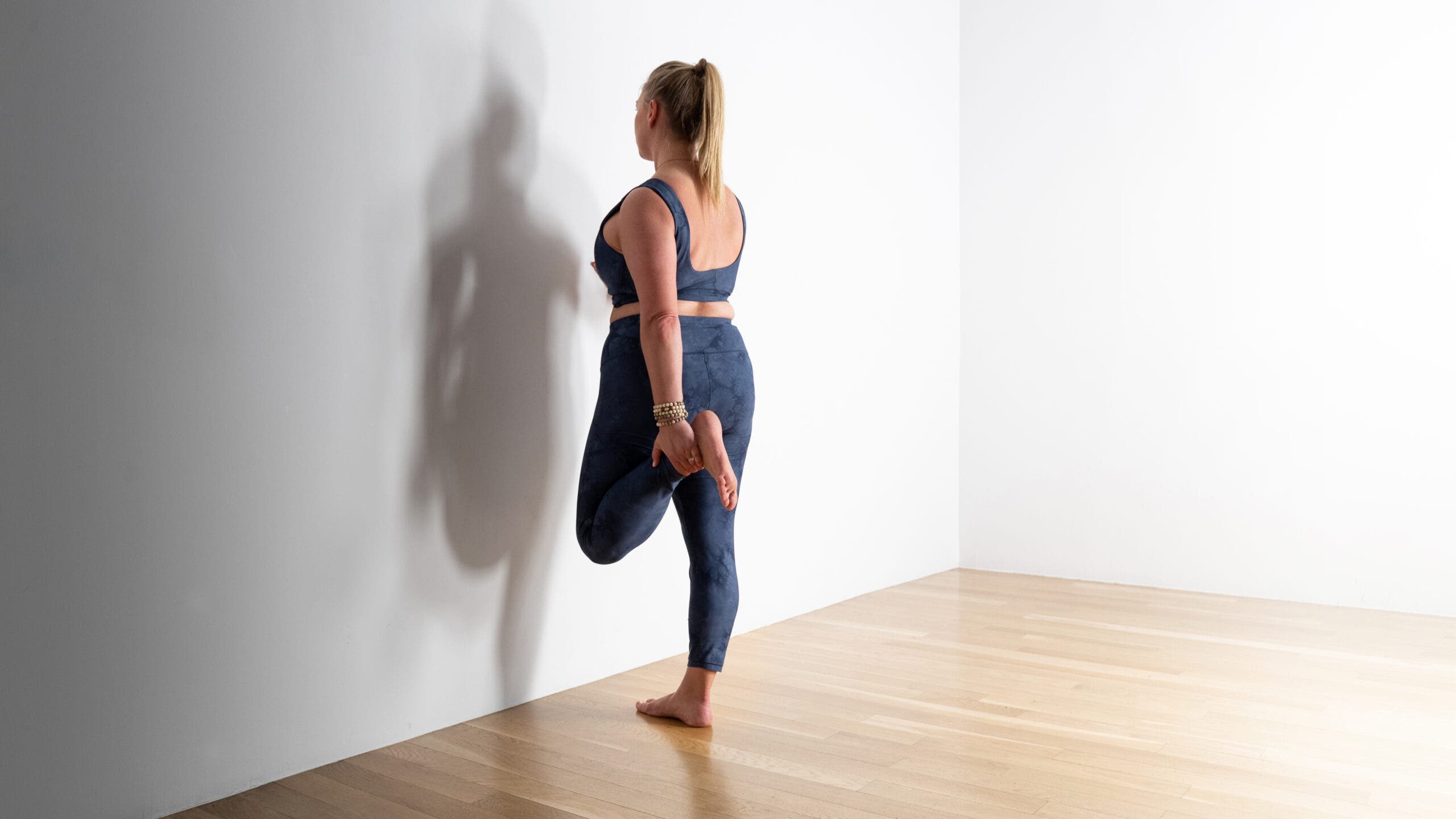
5. King Arthur’s Pose Variation
This is essentially the same stretch as Hero but is less intense on your knees and lower back. It creates less demand on the hip flexors to stabilize you as you’re stretching. For a more intense stretch, come into a Low Lunge with your left foot forward facing away from a wall. Place a folded towel or blanket underneath your right knee for support.
How to:
- Stand about 1 foot away from a wall or behind a chair with a back. Place your left hand against the wall or grasp the back of the chair. Lift your right heel behind you toward your sitting bones. Grasp your outer right ankle with your right hand or wrap a strap, belt, or towel around it and hold on to either end. Lengthen your spine. Stay in the standing variation of King Arthur’s Pose for 5-10 breaths. To come out, release your outer ankle and return to standing. Repeat on the other side.
This article has been updated. Originally published June 29, 2021.